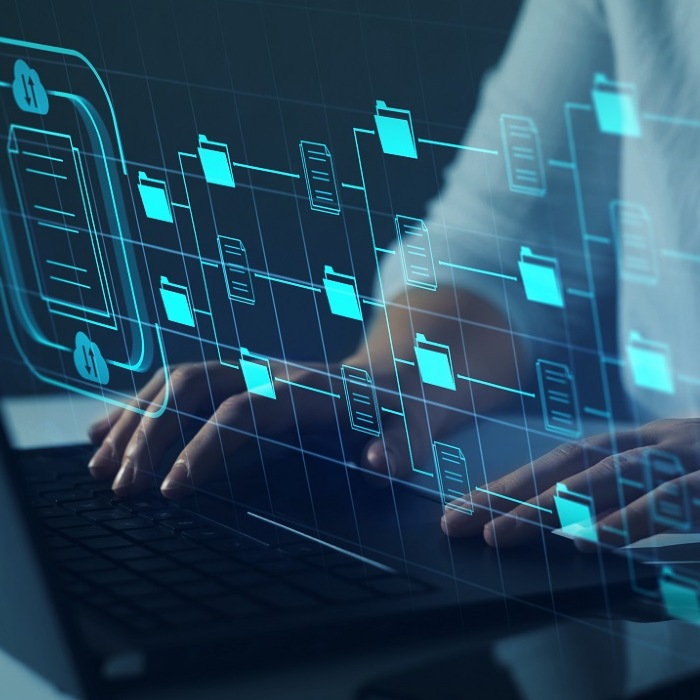America may run on Dunkin’, but digital economies around the world are fueled by data. Information is being generated, analyzed and put into action across more industries and everyday activities like grocery shopping. To find out what’s driving up the world’s growing dependency on digital data, The Forecast turned to two business industry experts.
An increasingly data-driven global society requires “cloud anywhere and everywhere, on demand,” said Scott Steinberg, a futurist, consultant, and author in a recent Tech Barometer podcast.
“Everything's going to be connected and talking to one another going forward. We're talking billions and billions of devices, and the cloud brains behind them are going to be essential to help these devices all coordinate and become more self-sufficient.”
The “cloud brains” to which he refers are distributed cloud intelligence that delivers continual insights and automation by correlating massive volumes of relevant, accurate data and applying artificial intelligence (AI) and machine learning (ML) algorithms to it.
Emerging Big Data Applications
In the case of autonomous vehicles, for example, each car produces millions of data points that must be constantly correlated with data from other sources about nearby vehicles, traffic patterns, the terrain ahead, pedestrians, stop lights, construction, breakdowns, and more. Together, these numerous changing data points paint a persistent picture of the traffic environment that, with assistance from ML, enables the car to navigate safely without operator intervention.
“All of that is going to be powered by the cloud,” said Steinberg. “And that's before you start to think about the impact of 5G and other technologies.”
Steinberg’s predictions weren’t limited to self-driving cars; rather, he was providing an example of the real-time, complex applications that are forming the backbone of cultures and economies that are increasingly digital and highly automated. These applications require that massive volumes of data are automatically collected, stored, correlated, analyzed, managed, and secured to enable precise and reliable functionality and decision-making.
Another data-intensive application example he cited was virtual reality (VR), including the emerging metaverse, which consists of computer-generated, 3D virtual worlds in which people shop, work, play and interact.
“The metaverse is too big to ignore,” Steinberg said.
That’s why not only big technology companies, including Meta, Google, Microsoft and Nvidia, have invested in it, but more traditional brick-and-mortar businesses like “the Walmarts and CVSs of the world have, too,” he said.
Data Overload
The applications mentioned are contributing to our world now by collecting 10,000 times more data than it can analyze, according to Steinberg. But he pointed out that there is no army of engineers at ready to manage the burgeoning data across self-driving cars, VR, medicine, manufacturing, education, and other data-driven applications.
“Rather, there will be overworked IT teams and the need for IT tools that don’t require high-level tech skills,” he predicted.
Specifically, he said, no-code and low-code solutions will arise to allow “everyday folks who aren’t software engineers to create their own solutions on the fly.”
For example, the future will be less about building applications from scratch, he said, and more about smaller teams leveraging open source and other tools, such as advanced AI routines, that companies can use to adapt or create their own custom solutions.
The intensive data sphere will drive new approaches to security and management. For example, Steinberg said he envisions that users’ digital identities will become “the new security perimeter,” porting rapidly between clouds, platforms, and applications as an answer to data complexity and volume.
At the same time, enterprises have to be thoughtful about who in the organization could benefit from having access to certain data, what potential data sources could be useful for the organization to tap into, and how to be efficient and insightful about how they use and protect data.
“Data-driven experiences are going to be the way forward,” Steinberg said.
“[Data-centricity is] going to give you the real-time insights and updates that you need to make workflows, processes, and applications much more capable and much more self-aware.”
Rise of the Platform Concept
But inside and outside organizations, he noted, people are trying to respond to the accelerated pace of application growth, managing the ever-growing data volumes that fuel them, and scaling the infrastructures that support them.
Technology advances in compute power, flash memory and network speeds are allowing IT infrastructure to respond to changing application requirements very fast, according to Lee Caswell, Nutanix SVP of products and solutions marketing. In addition, he said, IT infrastructure is evolving to what he calls a “platform concept” that he says is gaining traction.
“A platform can extend to places like edge, data centers, retail stores and other locations because the platform has APIs that I can write to that extend to it across different environments,” said Caswell.
“As new applications are coming in, you're able to go and leverage one platform for any applications that are seamlessly scalable and can be managed by generalists.”
Flexibility with Data Protection and Control
In addition, Caswell said, the faster pace at which applications have been developed for the past decade or so didn’t necessarily lead to them being hosted in the optimal location for performance, data security, cost, and other considerations over time. But the platform concept makes it possible to launch applications where they can be brought live fastest — such as on public cloud infrastructure — then moved over time to better meet evolving application outcome goals.
Caswell predicted that platforms will open the door to the practice of tagging data with attributes that enable efficient data restoral.
“People talk a lot about protecting data, but really what they fundamentally care about is restoring data quickly that they may have lost,” he said.
He explained that platforms enable data snapshots to be shared across private and public clouds, edge locations, and elsewhere in a data-centric model that lets organizations collocate applications and data and move them over time for optimization.
The flexible platform approach comes with the “controls that infrastructure people have built their careers on,” Caswell said.
He said that just because enterprises may find themselves embracing widespread IT infrastructure “points of presence,” that doesn’t mean that they should give up long-established data management capabilities.
Joanie Wexler is a contributing writer and editor with more than 25 years of experience covering the business implications of IT and computer networking technologies.
© 2023 Nutanix, Inc. All rights reserved. For additional legal information, please go here.





